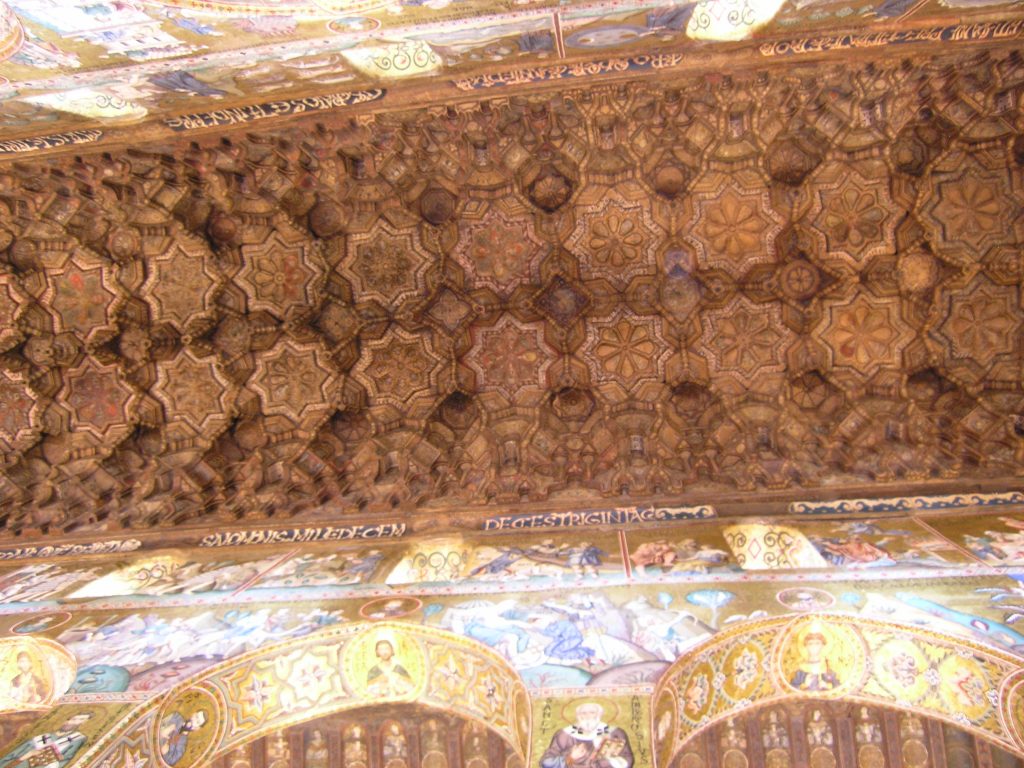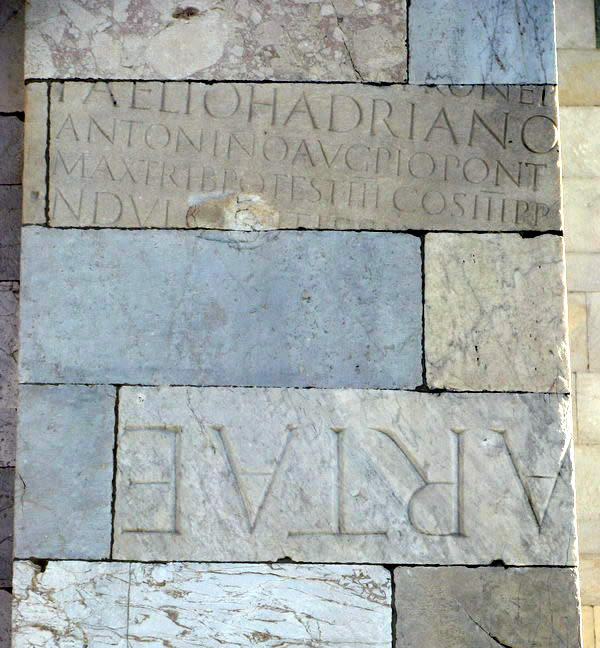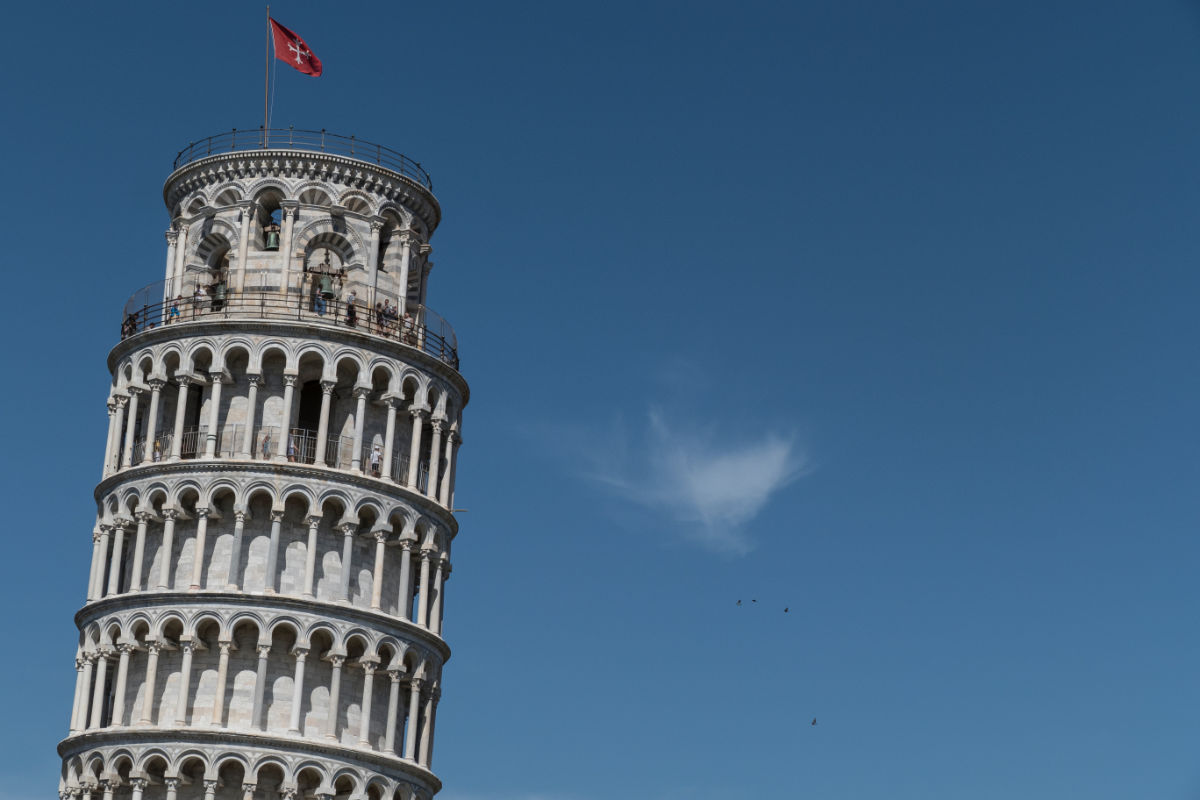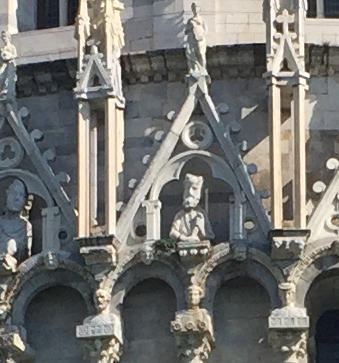Everybody knows the Leaning Tower of Pisa, seemingly endlessly about to topple. The famous tower is in Pisa, Tuscany, a city that now hosts the region’s main airport, but was once the capital of a powerful sea-faring Republic. And, by the way, it's Pisa - the leaning Tower of Pizza is a strange concept and not a real place!
So how did the Tower get built? And where did the money come from?
Why was the Tower of Pisa built?
To answer these questions, we’ll have to dip into some history:
A brief history of Pisa
Pisa has a proud history, and was founded in a strategic position by the Etruscans. The advantages of its protected position on the coast saved it from the worst damage after the fall of the Roman empire. ![]() It become a popular port, with connections to trade routes north-east to Bologna and south-east to Volterra and Siena.
It become a popular port, with connections to trade routes north-east to Bologna and south-east to Volterra and Siena.
Pisa developed into a commercial and military powerhouse on the Mediterranean. The Pisan flag with its cross became a recognised and feared presence on the seas, as the Pisan navy won a series of battles against the Saracens.
Lucky Pirates go to Sicily
As the Pisan sea-explorers (some might call them pirates) grew in ambition they were told of the riches available in the Arab-controlled island of Sicily. In 1063 an expedition was mounted to the city of Palermo. Palermo is on the western tip of Sicily, and had been controlled by the Arabs for the last 2 centuries. It was a fantastically wealthy and cultured city, with beautiful buildings and many riches to be plundered.
 The Cappella Palatina in Palermo. Photo by Di CarlesVA – Opera propria, CC BY-SA 3.0, https://commons.wikimedia.org/w/index.php?curid=8726133
The Cappella Palatina in Palermo. Photo by Di CarlesVA – Opera propria, CC BY-SA 3.0, https://commons.wikimedia.org/w/index.php?curid=8726133
In 1063 the Pisan raiders caught the inhabitants of the city unawares, causing them to flee in panic and leaving the invaders free to loot the city with impunity. The Pisans took their time, unable to believe the ease with which this prestigious city had been captured. They loaded their ships up with a fabulous amount of marble, gold and precious jewels.
 Upon their return the Pisans were overwhelmed by the sheer amount of loot that was brought back to the city. In this heavily religious period it was felt that spending at least a proportion of this unexpected windfall on God’s work would be wise. The port decided to build a "Field of miracles" as a tribute to God, with a Cathedral, Baptistery and, crucially for us, a Bell Tower.
Upon their return the Pisans were overwhelmed by the sheer amount of loot that was brought back to the city. In this heavily religious period it was felt that spending at least a proportion of this unexpected windfall on God’s work would be wise. The port decided to build a "Field of miracles" as a tribute to God, with a Cathedral, Baptistery and, crucially for us, a Bell Tower.
In 1064 work was started on the main cathedral of the city. The Duomo di Santa Maria Assunta was built with merely a tenth of the riches taken in Palermo. The marbles looted from the city were also re-used in parts of the cathedral. If you look around the building, particularly around the back, closest to the tower, you can see fragments of carved writing in the blocks used on the building!
Trading Nation
As the Cathedral was being built Pisa gained further power when it joined the crusades in 1099. By the early 12th century it had opened commercial bases in Siria, Lebanon and in Palestine (military power and commercial interests were then, as now, closely related).
 Pisa was now acting as an independent republic, with strong relationships and outposts all around the mediterranean. The alliance with the Byzantines (the Eastern arm of the roman empire) meant that Constantinople had a Pisan quarter, with over a 1000 inhabitants based there.
Pisa was now acting as an independent republic, with strong relationships and outposts all around the mediterranean. The alliance with the Byzantines (the Eastern arm of the roman empire) meant that Constantinople had a Pisan quarter, with over a 1000 inhabitants based there.
 Photo by Ivana Tanaskovic on Unsplash
Photo by Ivana Tanaskovic on Unsplash
Throughout all this period of expansion the city continued to expand and improve their "Field of miracles" (Campo dei Miracoli). In 1153 work was started on a new baptistery close to the Cathedral - above. It was completed in 1353, while in 1173 work was started on a bell tower for the city's splendid new cathedral.
The Leaning tower of Pisa
As a coastal city, Pisan builders were used to the risk of sand in the ground, and had a number of strategies to ensure foundations were solid. One method was to lay the foundations and then leave them for a year to settle. This was done for the Tower too, but clearly this time something went wrong: even by the time the builders had reached the first floor the lean was starting to be visible.
 Works were stopped at the third floor for over a hundred years. In 1566, Vasari, writing about the tower’s troubled beginnings, blamed the architect, Bonanno Pisano, for not knowing how to make solid foundations.
Works were stopped at the third floor for over a hundred years. In 1566, Vasari, writing about the tower’s troubled beginnings, blamed the architect, Bonanno Pisano, for not knowing how to make solid foundations.
Works were started again in 1275 with a new architect, Giovanni di Simone. In an effort to correct the lean he built the next few floors angled in the opposite direction. As any engineer will tell you, this made the problem worse, by effectively increasing the push in the direction of the lean.
Nevertheless the works carried on and the tower was completed in the middle of the 14th century, in 1372, now over 300 years after the city's navy had returned loaded with gold from Palermo. In the intervening years, the fortunes of the city had been changing.
Decline and treason
By the end of the 13th century and during the 14th the power of the city suffered a series of blows, including two large defeats. One at sea and one on land, to their enemies the Florentines. The coup-de-grace came in 1406 when Giovanni Gambacorta, in charge of the city, accepted a payment of 50,000 Florins to betray the city to the Florentine army.
Pisa’s power waned rapidly but the tower still stands.
It owes it’s existence to a piratical raid that went extraordinarily well, and it’s fame to badly constructed foundations, and it continues to delight visitors today.
To visit the Tower, see this page for information on how to visit and buy tickets to visit the Tower of Pisa.
To read more about Pisa see here: - including what to see beyond the Leaning Tower of Pisa, or find out where to stay around Pisa.
 Photo by Marco Ceschi on Unsplash
Photo by Marco Ceschi on Unsplash
